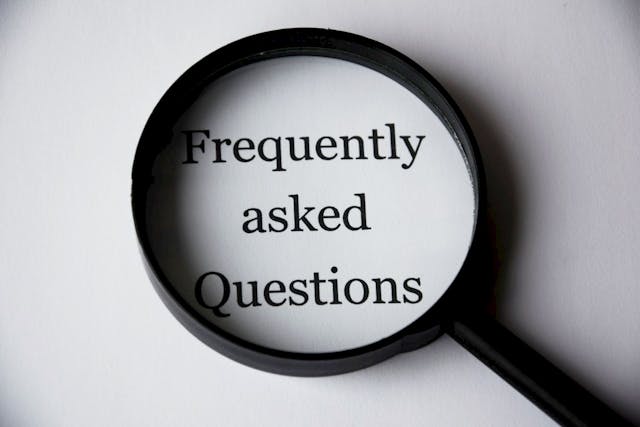How to Create a Debt Management Plan: One of the most important aspects of financial wellness is debt management. Debt may become out of hand without a clear plan, which can cause stress and unstable finances. You may reduce debt, recover financial control, and pave the way for financial independence with the aid of a well-designed debt management strategy. You will learn the necessary steps to develop a successful debt management strategy from this tutorial.

What exactly is a Debt Management Plan?
A structured repayment plan called a debt management plan (DMP) is intended to assist people in making timely and orderly payments on their debts. It entails evaluating your financial status, setting debt priorities, and developing a budget-friendly payment schedule.
A Debt Management Plan’s Advantages
- Decreased Financial Stress: Simplified payback plans.
- Reduced Interest Rates: Terms were negotiated with creditors.
- Better Credit Score: Timely and reliable payments.
- Clear Timeline: A plan for paying off debt.
A Comprehensive Guide to Formulating a Debt Management Strategy
1. Evaluate Your Financial Condition
Recognise your existing financial situation first. Compile all of your financial data, such as:

- Income: A monthly pay cheque or other revenue streams.
- Costs: Both variable and fixed.
- Debt Information: Minimum payments, interest rates, and loan amounts.
2. Sort Debts by Category and Priority
Sort your debts by urgency, interest rate, and kind. Typical classifications consist of:
- Payday loans and credit cards are examples of high-interest debts.
- Mortgages and vehicle loans are examples of secured debts.
- Student loans: If interest rates are reasonable, they should be given less emphasis.
Use the avalanche technique (paying off high-interest bills first) or the snowball method (paying off the smallest obligations first).
3. Establish Reasonable Financial Objectives
Establish specific goals for your debt repayment strategy. Among the examples are:
- Short-term objectives: include paying off a particular credit card within six months.
- Long-Term Objectives: Paying off all debt in five years.
4. Establish a monthly spending plan
Set aside money for debt repayment while paying for essentials. Make use of these suggestions:
- Track Expenses: Keep tabs on your expenditures with spreadsheets or applications.
- Reduce Needless Expenses: Cut back on subscriptions, eating out, and impulsive purchases.
- Emergency Fund: To prevent taking on further debt, set aside a modest sum for savings.
5. Engage in Creditor Negotiations
Speak with creditors about more favourable conditions for repayment. This might consist of:
- Reduced Interest Rates: Based on past payments, ask for lower interest rates.
- Payment Plans: Establish recurring monthly payments.
- Debt Settlement: Work out a one-time payment that is less than what is owing.
6. Examine Expert Assistance
If handling debt on your own seems too much, get help from:
- Credit counselling organisations: Offer guidance and develop DMPs.
- Debt Consolidation Services: Consolidate several bills into a single payment using debt consolidation services.
- Legal advisers: For investigating debt relief options such as bankruptcy.
7. Track and Modify Your Strategy
Make sure your DMP is in line with your financial circumstances by reviewing it on a regular basis. Adapt as necessary in light of unforeseen costs or changes in revenue.
Common Errors to Steer Clear of
Ignoring High-Interest Debts: To reduce interest costs, give priority to these debts.
Missing Payments: Penalties and damage to credit ratings can result from late payments.
Over-Borrowing: Refrain from taking out additional loans unless they are absolutely required.
Not Monitoring Progress: To keep yourself motivated, keep a close eye on your repayment progress on a regular basis.
Resources and Tools for Managing Debt
Tools for Budgeting

- Mint: Monitors spending and financial plans.
- You Need a Budget, or YNAB, aids in the efficient use of every dollar.
Calculators for Debt Repayment
- To determine interest savings and payback schedules, use online calculators.
Knowledge of Finances
- To get better at managing your finances, study personal finance books or take seminars.
Loans for Debt Consolidation
- To consolidate several debts into a single, reasonable payment, take into account loans with reduced interest rates.
Payments Made Automatically
To prevent late fees and penalties, set up recurring payments to make sure you never miss deadlines.
Useful Advice for Maintaining Focus
Celebrate Your Progress: Give yourself a treat after you settle a debt.
Engage Your Family: Get support from your loved ones by sharing your strategy with them.
Avoid Temptation: Use credit cards sparingly unless it’s really required.
Pay Attention to the Finish Goal: To keep motivated, picture your life free of debt.
Review Frequently: Plan regular check-ins to assess progress and make any adjustments.
Advantages of Following Your Plan
Financial Independence: Get rid of debt.
Better Mental Health: Less stress from money concerns.
Stronger Credit Profile: Better access to financial possibilities is associated with a stronger credit profile.
Savings Growth: After debts are settled, shift money to investments and savings.
Improved Financial Discipline: Establish routines that shield you against debt in the future.
Innovative Techniques for Debt Management
Which Is Better, the Snowball or the Avalanche Methods?
- The snowball method involves starting with the lowest debts in order to gain momentum.
- To save money over time, use the Avalanche Method to prioritise loans with the highest interest rates.
Using Side Projects to Hasten Debt Repayment
- Offering your services online: As a freelancer might help you make additional money.
- Part-Time Jobs: Use extra money to settle debt.
- Selling Unused Items: Clear up your clutter and get money by selling things you no longer need.
Increasing Emergency Funds While Handling Debt
- Set up a little sum every month to build up a safety net.
- Increase your emergency fund by using high-yield savings accounts.
Frequently Asked Questions
What is the difference between debt management plans and debt consolidation?

A debt management plan entails negotiating with creditors to pay off debts in a methodical manner, whereas debt consolidation combines several debts into a single loan with a lower interest rate.
Can a debt management plan negatively affect my credit score?
Enrolling in a debt management plan may initially affect your credit score, but consistent payments over time will improve it.
How long does it take to finish a debt management plan?
The duration of a debt management plan depends on the total amount of debt and your ability to repay. Usually, the plan lasts three to five years.
Conclusion
One of the most effective steps to reaching financial independence and stability is developing a debt management strategy. You may reclaim control and strive towards a debt-free future by evaluating your financial status, setting priorities for your obligations, and following a well-organised strategy. Recall that the secret to success is discipline and consistency. Take the first step towards a better financial future by starting now.
How to Negotiate Credit Card Debt

